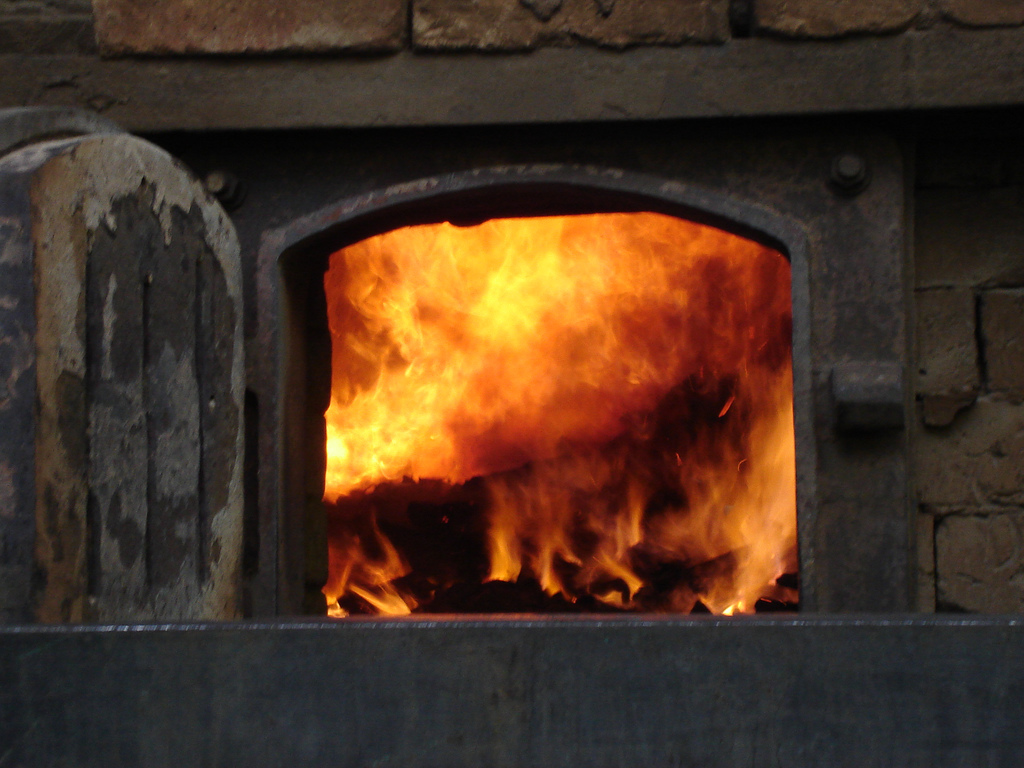Adiabatic Flame Temperature

The adiabatic flame temperature is the maximum temperature of the exiting gas after the combustion of fuel. 1 mole of LIQUID n -octane C X 8 H X 1 8 was burned completely in a furnace with 50% excess AIR. Assume no octane is left after combustion. Note that the nitrogen gas in air is INERT thus does not react during combustion. The liquid fuel and oxygen enter the furnace at 2 5 ∘ C . Determine the adiabatic flame temperature of the exiting gas in degrees Celsius. Round your answer to four significant figures.
Notes:
-
Air composes of 79 mole % nitrogen and 21 mole % oxygen.
-
The excess air is defined as the excess amount of air with respect to the stoichiometric amount of air needed to completely combust the fuel.
Data:
-
Latent heat of vaporization of n-octane at 298.15 K: 4 1 . 5 3 k J / m o l
-
Standard enthalpies of formation:
C 8 H 1 8 ( l ) = − 2 0 8 . 5 9 k J / m o l C O 2 ( g ) = − 3 9 3 . 5 1 k J / m o l H 2 O ( g ) = − 2 4 1 . 8 2 k J / m o l
- Specific heats of product gases (assumed constant):
C 8 H 1 8 ( g ) = 6 7 . 8 7 J / ( m o l K ) C O 2 ( g ) = 4 5 . 3 7 J / ( m o l K ) H 2 O ( g ) = 2 8 . 8 5 J / ( m o l K ) O 2 ( g ) = 3 0 . 2 5 J / ( m o l K ) N 2 ( g ) = 2 9 . 1 2 J / ( m o l K )
The answer is 1796.
This section requires Javascript.
You are seeing this because something didn't load right. We suggest you, (a) try
refreshing the page, (b) enabling javascript if it is disabled on your browser and,
finally, (c)
loading the
non-javascript version of this page
. We're sorry about the hassle.
1 solution
The solution. Is wrong The heat evolved is in kilojoules But in the 2nd last step Where you've evaluated the heat content for applying the condition for adiabaticity(heat released in reaction goes entirely into heating up the contents /mixture of gases You did not convert kilojoules to joules Hence the answer is off by a factor of 1000 Edit ☺️ . Realised there's a typo in your solution(kJ instead of J) Solved it in the same way
Reaction: C 8 H 1 8 ( l ) + 1 2 . 5 O 2 ( g ) → 8 C O 2 ( g ) + 9 H 2 O ( g )
Find the moles of each gas leaving the furnace.
Excess amount of O 2 is 1 2 . 5 × 0 . 5 = 6 . 2 5 m o l .
Amount of inert N 2 leaving is ( 1 2 . 5 + 6 . 2 5 ) × 2 1 7 9 = 7 0 . 5 3 6 m o l .
Amount of C O 2 leaving is based on the reaction which is 8 m o l .
Amount of H 2 O leaving is based on the reaction which is 9 m o l .
Δ H r x n o = Δ H c o m b u s t i o n o + Δ H v a p o Δ H r x n o = [ 8 ( − 3 9 3 . 5 1 ) + 9 ( − 2 4 1 . 8 2 ) ] − ( − 2 0 8 . 5 9 ) + 4 1 . 5 3 = − 5 0 7 4 . 3 4 m o l k J . For 1 mole of octane, the enthalpy of the reactions is equal to − 5 0 7 4 3 4 0 k J .
Since the condition must be adiabatic, the heat from the reaction must be equal to the heat absorbed by the combustion gases. Therefore: − Δ H r x n o = q g a s e s = ∑ i r n i c i × Δ T
5 0 7 4 3 4 0 J = [ 6 . 2 5 ( 3 0 . 2 5 ) + 8 ( 4 5 . 3 7 ) + 9 ( 2 8 . 8 5 ) + 7 0 . 5 3 6 ( 2 9 . 1 2 ) ] K J × ( T − 2 5 ) ℃
Solving for T, T = 1 7 9 5 . 9 3 ° C . Rounding up to 4 significant figures, you get 1 7 9 6 ° C .